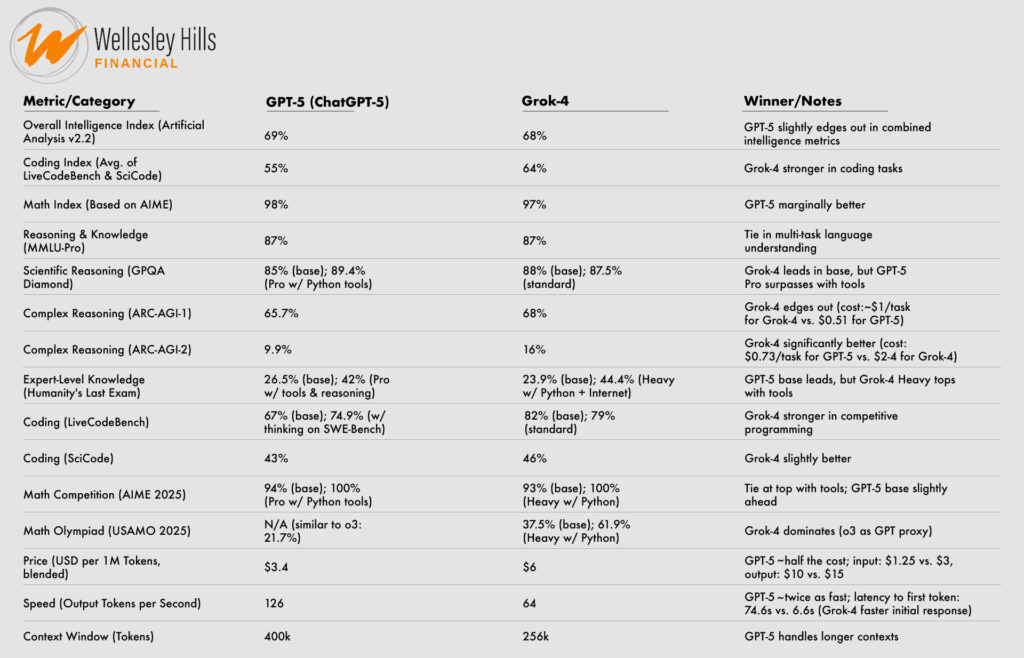This is the third installment of our AI – Payments, Commerce & Markets series, expertly constructed by Wellesley Hills Financial Executive Advisor Wayne Johnson III. This week we cover how AI machines replicate human intelligence by highlighting their hardware and software capabilities. We also include a comparison of the very new Chat GPT-5 to Grok4 through common metrics used to test AI capabilities, as explained in former installments.
Artificial Intelligence (AI) Overview
Artificial Intelligence (AI) involves using machines or software to perform tasks that typically require human intelligence. AI systems utilize algorithms, statistical models, and neural networks to process and analyze data, imitating cognitive functions. The objective is to develop systems capable of understanding, reasoning, and learning, enabling AI to manage complex relational subject matter across diverse topics.
Hardware and Software Requirements
AI achieves optimal performance by using specialized hardware and software. The volume of data processed is exceptionally high, often reaching petabytes. High Performance Computing (HPC) architecture is essential and relies on specific AI hardware platforms.
AI Hardware Providers Include: NVIDIA, TSMC, Broadcom, AMD, ARM, Marvell, SuperMicro, Dell, SK Hynix.
Cloud Service Providers Hosting AI Configurations Include: Amazon (AWS), Microsoft (Azure), Google, Oracle, Meta and xAI. In AI only cloud storage: CoreWeave, Lambda and Tensorwave.
Programming languages Commonly used to Support AI Functionality: Python for machine learning (ML) and deep learning (DL), C++ or CUDA (C-based for NVIDIA) for training large models and running inference at scale, Java for interaction with large enterprise systems, Julia for numerical computation and Scala for big data pipeline. Additional niche programs exist for other specialized functions.
